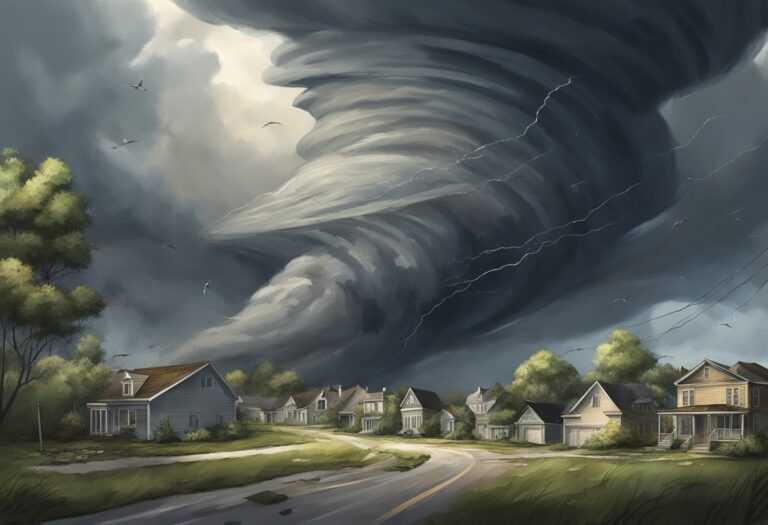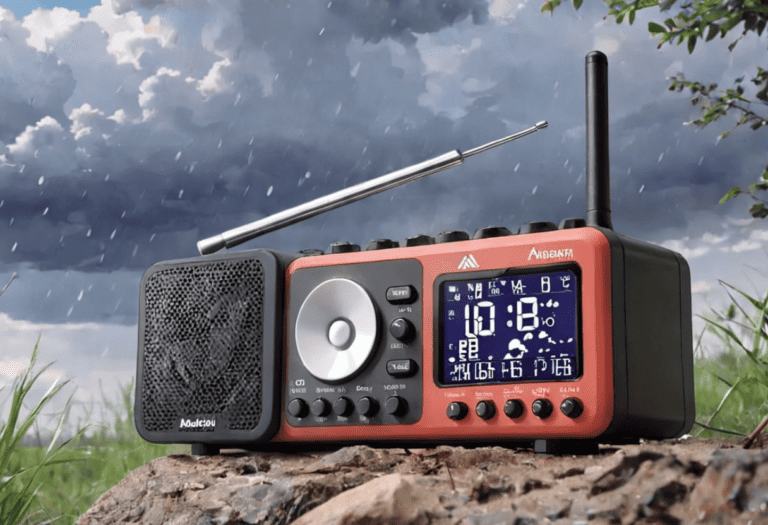The United States boasts a diverse array of climates, and while some cities enjoy abundant sunshine year-round, others are enveloped in clouds more often than not.
Living in one of the cloudiest cities can have a profound impact on everything from mood to outdoor activities. Understanding which cities are the cloudiest, and the reasons behind the frequent cloud coverage, helps residents and visitors alike prepare for the atmospheric conditions they can expect.
Weather plays a crucial role in daily life, and cloudiness is a key factor that influences local weather patterns. An area’s topography, proximity to bodies of water, and specific climate conditions contribute to its average cloud cover. It’s not unusual for some cities to experience more cloudy days than sunny ones throughout the year, shaping the local culture and lifestyle.
For individuals curious about moving to or visiting these areas, recognizing these patterns is essential for setting the right expectations.
Living in the cloudiest U.S. cities impacts lifestyle and mood, with geographic and climatic factors influencing cloud cover. Cities like Seattle and Portland experience frequent overcast days due to their proximity to the Pacific Ocean and local topography.
Factors Influencing Cloudiness
The cloud coverage you experience in different U.S. cities can vary widely due to a range of distinct factors. This section will explore geography, seasonal patterns, and specific meteorological conditions contributing to cloudiness.
Geographic Location
Your location within the United States significantly influences the amount of cloudy days you’ll encounter. States in the Pacific Northwest, such as Washington and Oregon, experience high levels of cloudiness partly due to their proximity to the Pacific Ocean. Cities like Seattle are nestled between the Olympic Mountains to the west and the Cascade Range to the east, which trap moisture-rich air. Similarly, areas around the Great Lakes are subject to overcast conditions because the large bodies of water provide ample moisture to fuel cloud formation.
Seasonal Variations
The time of year plays a crucial role in the nature of your city’s skies. During the winter months, cities in the Great Lakes region commonly face overcast skies due to lake-effect clouds and snow. In contrast, summer can bring clearer skies, especially as you move inland away from coastal areas. The Pacific Northwest is particularly known for its gray, cloudy winters, while summers are relatively sunny, especially in the rain shadow of the Puget Sound.
Meteorological Conditions
Cloud formation is directly tied to the atmospheric conditions present. When warm, moist air rises and cools, it often condensates into clouds, leading to overcast conditions. In the mountainous regions of the U.S., orographic lift can cause this effect when moist air is forced upwards by the terrain, cooling and forming clouds. Furthermore, your local temperatures and moisture levels can influence whether you’ll see a cloudy or clear sky, with high humidity and cool air often culminating in more cloud cover.
Top Cloudiest Cities in the US
When you’re planning a trip or considering a move, it’s essential to be aware of the local climate. Some US cities see an impressive number of cloudy days annually. This overview will guide you through the regions most known for their overcast skies, ensuring you know what to expect in these areas.
Pacific Northwest Cities
The Pacific Northwest is renowned for its lush landscapes, partly due to the frequent cloud cover. Seattle, with its position on the Puget Sound, experiences a high number of overcast days, contributing to the region’s reputation for gray skies. Nearby, Portland, Oregon, also ranks high for cloudiness, where the weather often brings a consistent soft drizzle, especially during the fall and winter months.
- Seattle, Washington
- Overcast Days: 226
- Portland, Oregon
- Cloudy Days: 222
Great Lakes Cities
Nestled in the snow belt, cities like Buffalo, Cleveland, and Detroit contend with lake-effect cloudiness. Grand Rapids, Michigan, experiences considerable cloudiness due to the nearby Great Lakes, while Cleveland, Ohio, sees a significant number of cloudy skies, potentially impacting everything from mood to local sports games.
Cities with Most Overcast Days:
- Buffalo, New York: 208
- Cleveland, Ohio: 202
- Grand Rapids, Michigan: 205
Eastern US Cities
Moving eastward, cities like Binghamton and Syracuse in New York state are contenders for the title of cloudiest cities in the US. Not far behind, places like Rochester and Pittsburgh are noted for the high frequency of overcast conditions. If you’re living in or visiting these cities, be sure to pack a good coat and a cheerful umbrella.
- Syracuse, New York
- Most Cloudy Days: 211
- Binghamton, New York
- Overcast Days: 204
Remember that frequent cloudiness can create a unique and cozy atmosphere that defines the character of these regions, regardless of the time of year.
Implications of Living in Cloudy Cities

Living in some of the cloudiest cities in the US, such as Hilo, Hawaii, and Juneau, Alaska, can significantly influence your daily life and health. The persistent dense cloud cover and high rainfall in these areas can bring about notable changes in lifestyle habits and wellbeing.
Effects on Lifestyle
In cities like Hilo, where overcast skies are common, outdoor activities may often be disrupted. The likelihood of rain leads to a greater reliance on indoor recreation and may reduce your involvement in sports and group events that are traditionally held outdoors. The dense cloud that frequently blankets the city can also affect the commute, as lower visibility sometimes results in slower traffic and longer travel times.
- Considerations for outdoor planning:
- Always have a backup indoor activity option.
- Invest in quality rain gear for necessary outings.
Juneau, Alaska is another city where outdoor activities are frequently subject to weather conditions. It’s essential for you to plan ahead, especially considering the variable and often unpredictable weather patterns.
- Strategies for staying active:
- Join local community centers or gyms with indoor facilities.
- Embrace outdoor activities suited for wet environments, such as kayaking or rainforest hiking.
Health and Wellbeing
The continuous cloud cover over cities like Hilo and Juneau can affect mental health and lead to a condition known as Seasonal Affective Disorder (SAD), a type of depression related to changes in seasons. If you reside in these areas, it’s important to be aware of the symptoms and seek professional help if you’re feeling down during the long stretches of cloudy weather.
The lack of sunlight also means your body may produce less vitamin D, which is essential for bone health and also contributes to a well-functioning immune system. As a resident, you may need to consider dietary supplements or vitamin D-rich foods to compensate for the lower exposure to sunlight.
Tips for supporting your mental health:
- Engage in regular exercise, which has been shown to boost mood.
- Establish a strong social network to combat feelings of isolation.
Ways to increase vitamin D intake:
- Consume fatty fish, such as salmon or mackerel.
- Include fortified foods in your diet, like certain cereals and dairy products.
Understanding Weather Data and Reporting
When discussing weather patterns such as cloud coverage, it’s essential you comprehend how data is collected and reported. This understanding will help you interpret why certain cities are labeled as the cloudiest.
Measuring Cloud Cover
Cloud cover is quantified using a scale known as oktas, which measures the extent to which clouds cover the sky. On a cloudy day in the United States, meteorologists observe the sky at various times to determine the average cloud cover. They distinguish between heavy cloud, partial cloud, and clear days. A heavy cloud day would score high on the okta scale, indicating almost total coverage of the sky. In contrast, on partly cloudy days, the sky may show four to six oktas. Finally, during clear days, you would observe one or no oktas at all.
Cloudiest Rankings Explained
The term cloudiest city in the United States is determined by analyzing annual data from the National Climatic Data Center. This data reflects the frequency of overcast conditions—days when clouds cover three-quarters of the sky or more. The rankings compare U.S. cities based on their average cloud cover percentage. For example, a high ranking signifies consistent cloudy days throughout the year, while lower rankings indicate more partly cloudy days or clear days. It’s important to understand that these rankings do not necessarily correlate with rainy days; it’s purely about the presence of clouds in the sky.
Frequently Asked Questions
When you’re looking to understand the impact of overcast skies on various cities across the United States, these specific inquiries provide insight into the prevalence and effects of cloudy weather patterns.
Which city in the United States is known for having the most days with overcast weather?
Seattle, Washington is often cited as the city experiencing the most days with overcast conditions, contributing to its reputation for gloomy weather.
How do cloud coverage patterns vary among the top cloudiest cities in the United States?
Cloud coverage patterns can widely vary, with cities like Portland, Oregon and Buffalo, New York often experiencing prolonged periods of cloudy weather during fall and winter months.
What are the annual average cloud cover percentages for the leading cloudy cities in the US?
The annual average cloud cover percentages hover around 67-75% for cities known for their cloudy skies, such as Seattle, Washington, and Pittsburgh, Pennsylvania.
Can you list the top states in the US where cloudy skies are most prevalent?
States with frequently cloudy skies include Washington, Oregon, and New York, particularly in cities like Seattle, Portland, and Buffalo respectively.
How does being one of the cloudiest cities affect the lifestyle and culture in places like Binghamton?
In Binghamton, the heavy cloud cover influences daily life, leading to indoor-centric activities and impacting local mood and cultural events that adapt to the less sunny weather.
Which states are known to have the least amount of cloudy days in the US?
Arizona and Nevada are known for their clear skies, with cities like Las Vegas and Phoenix experiencing the least amount of cloudy days in the US.







